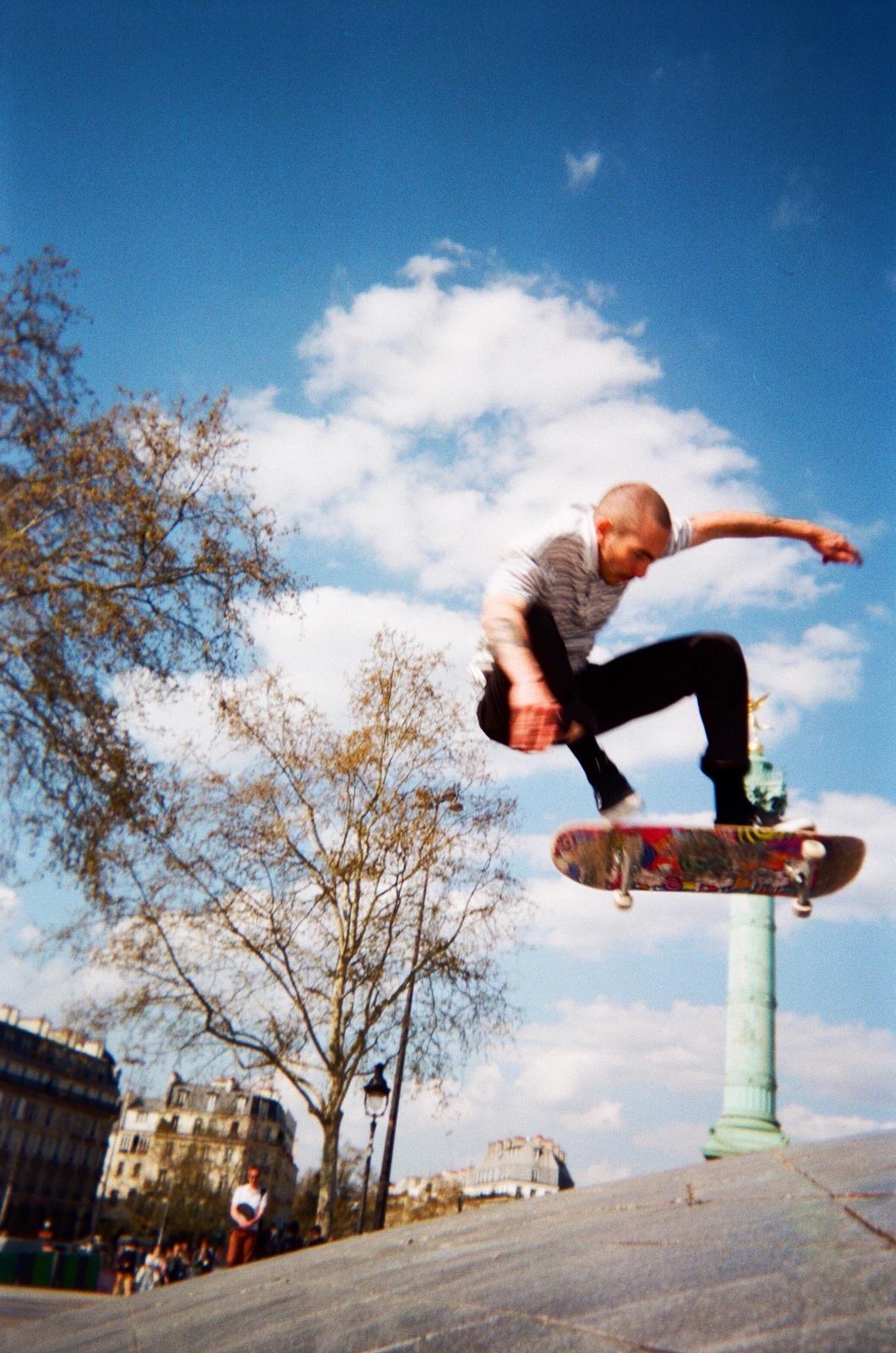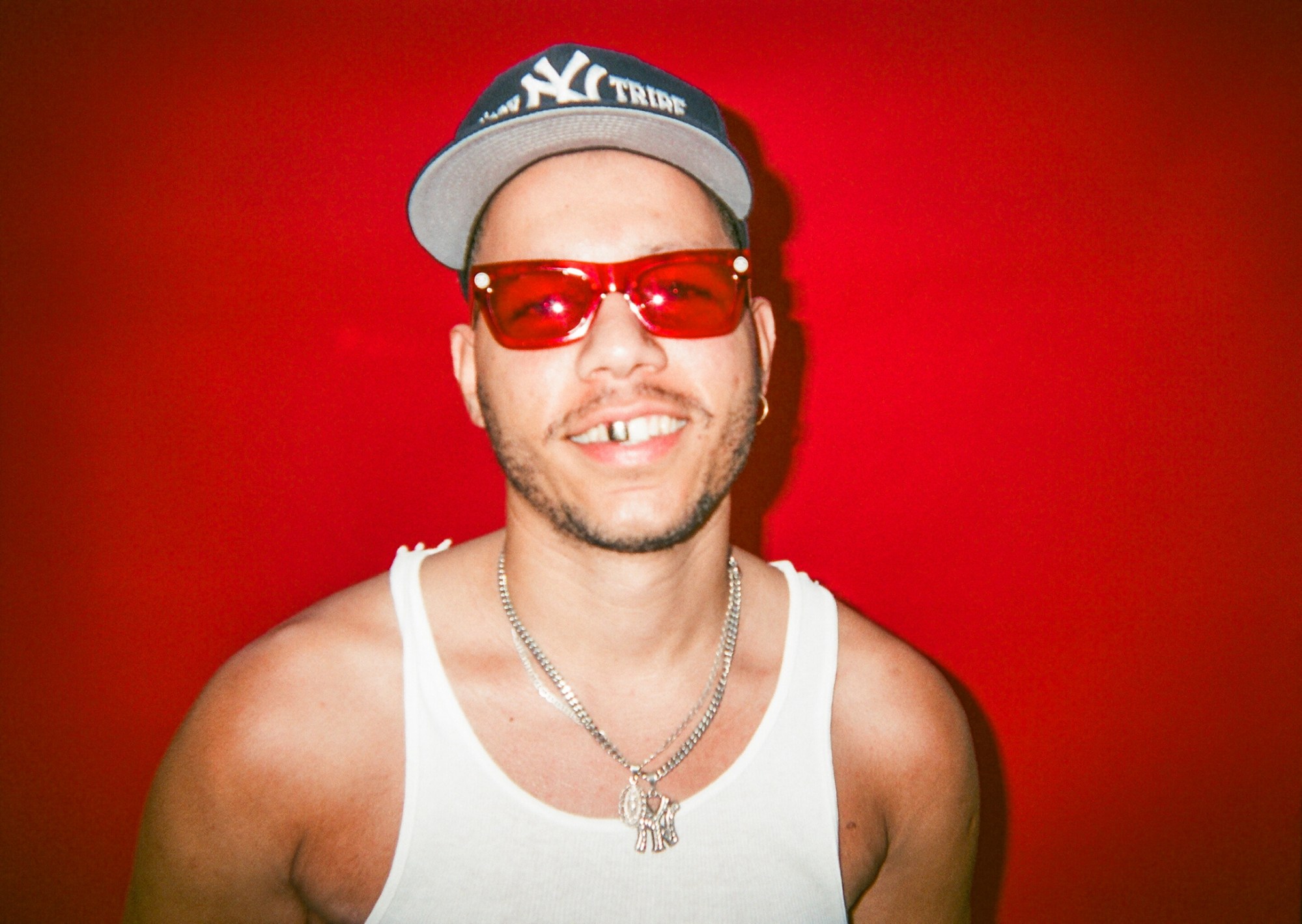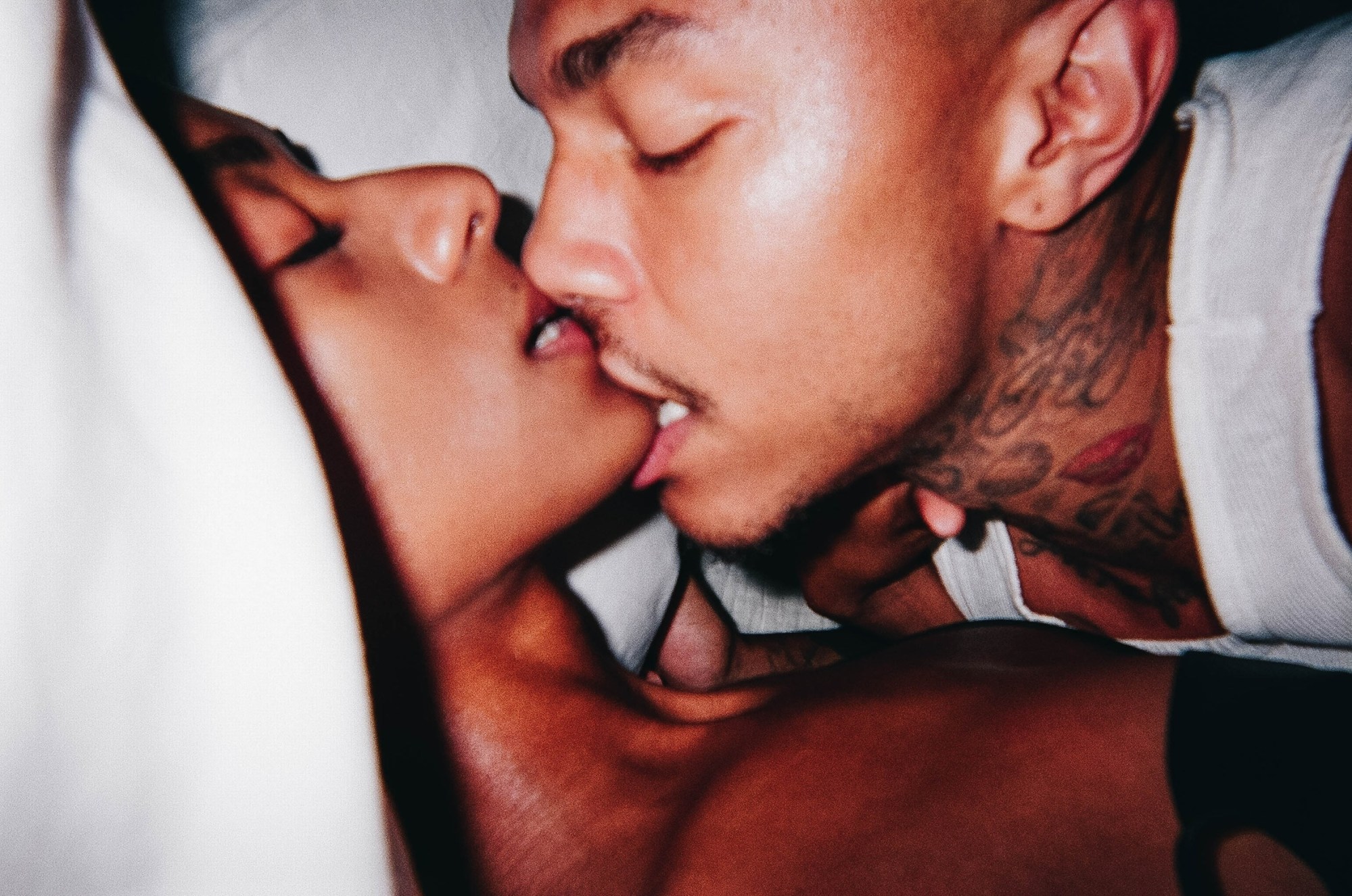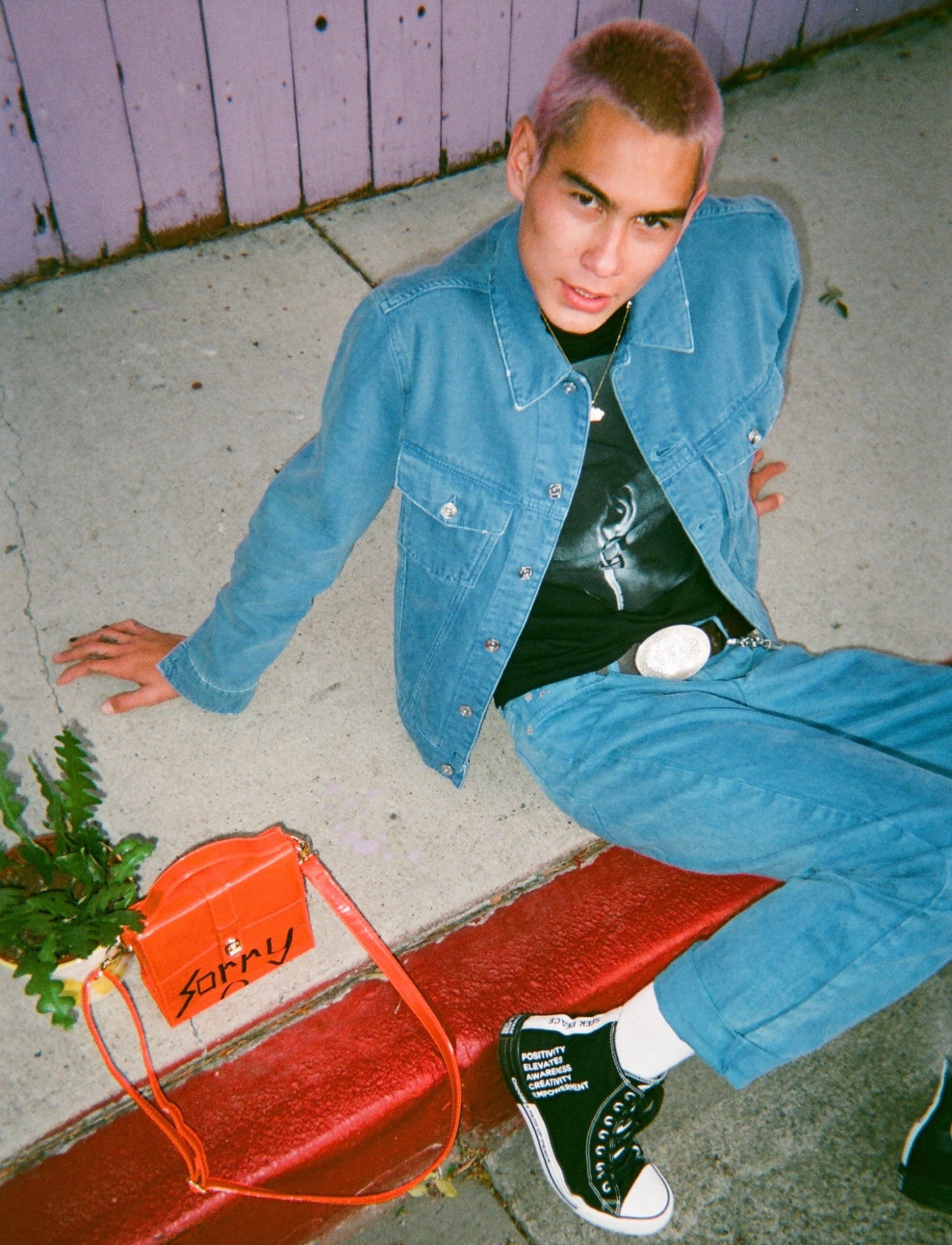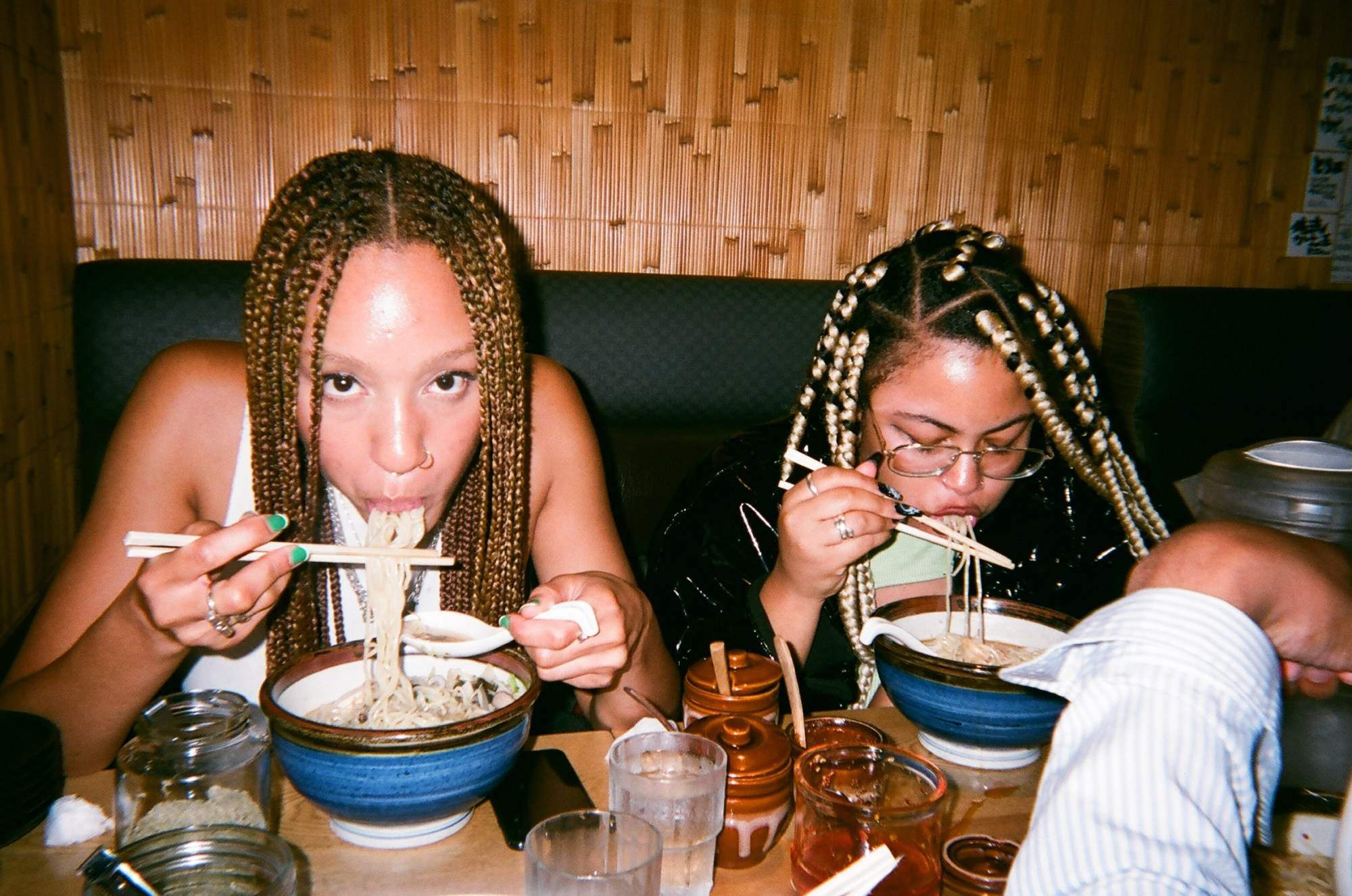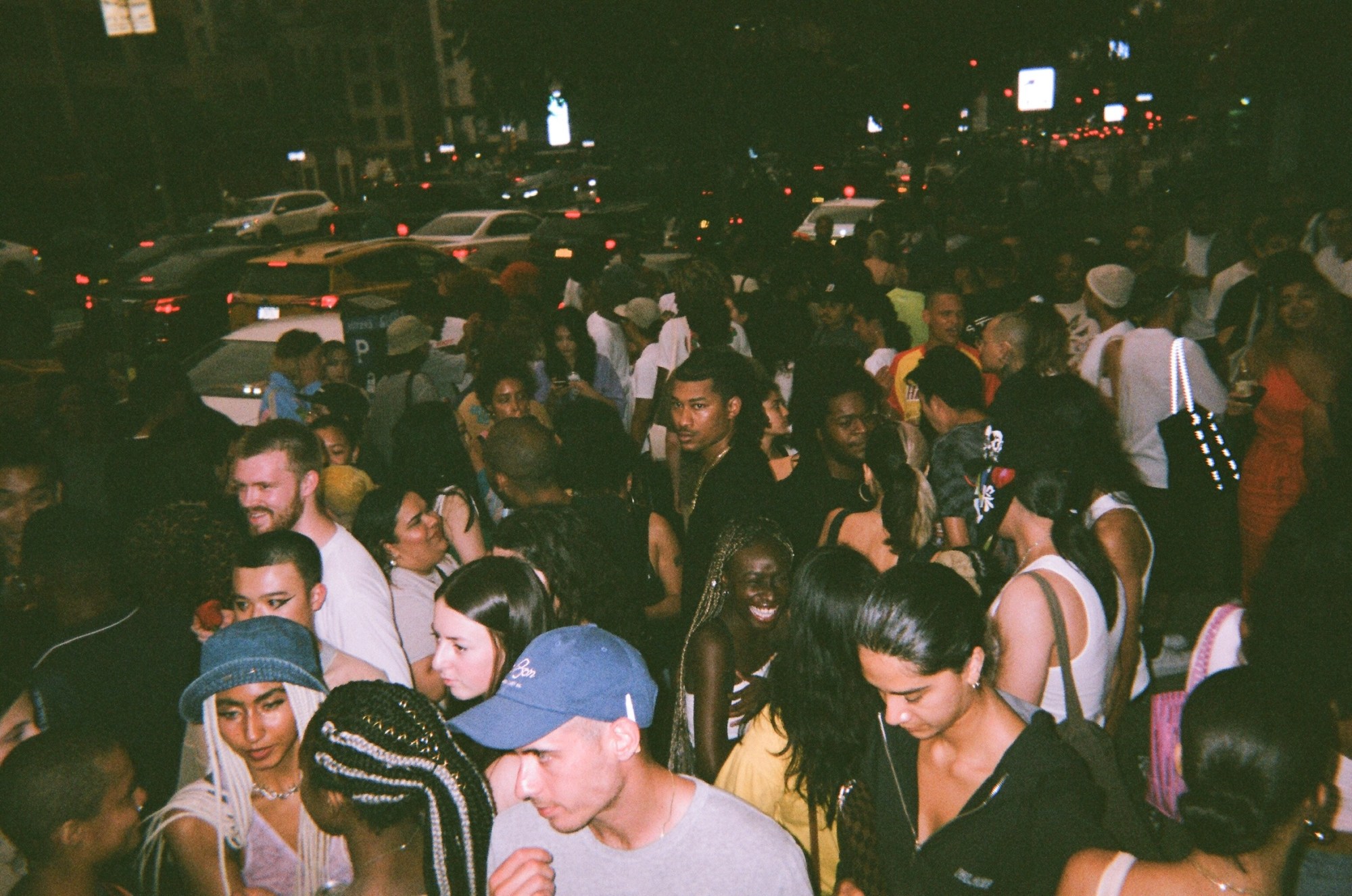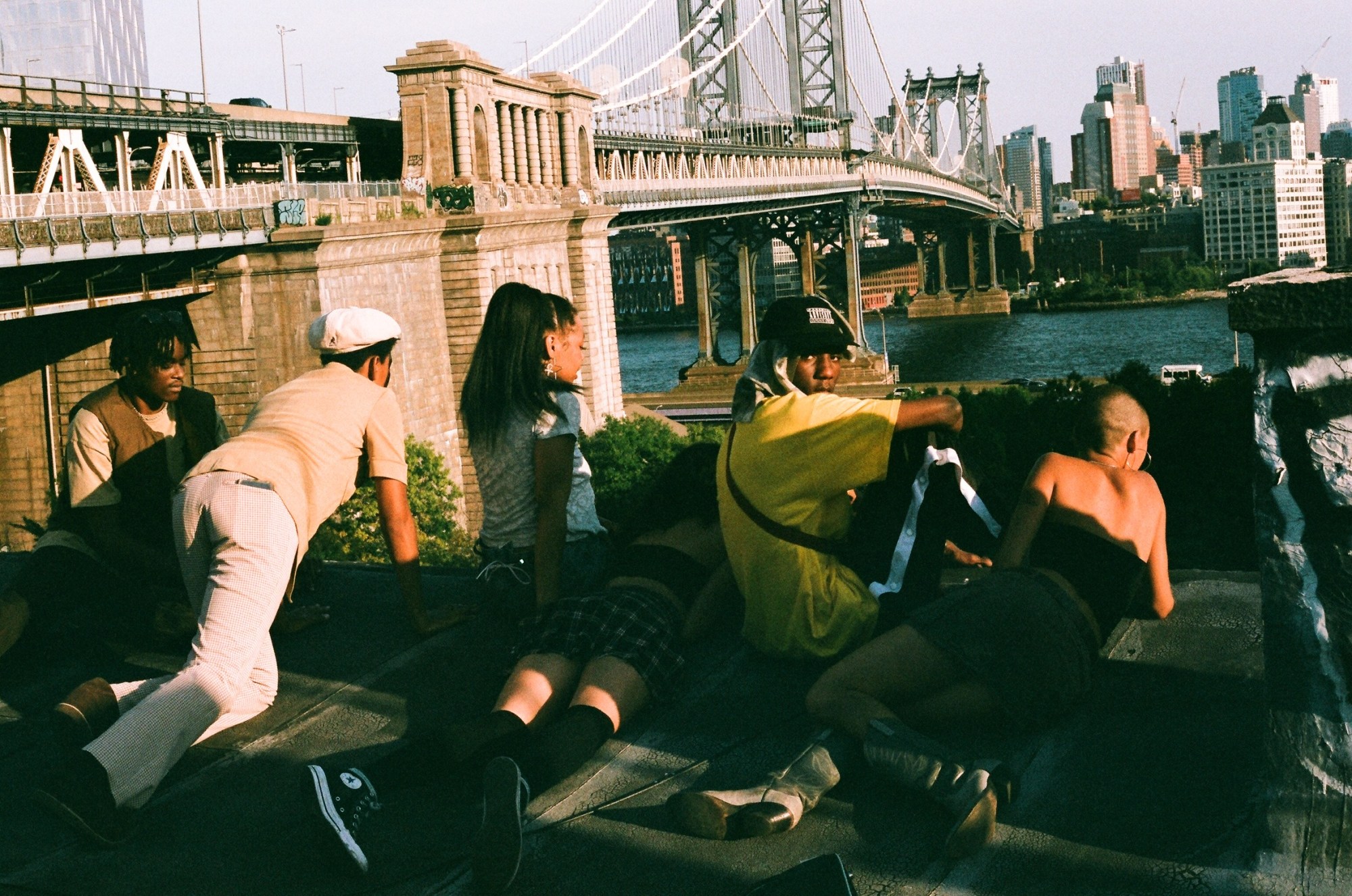Here Today, Gone Tomorrow. This is what’s written on Manual Photo’s t-shirts, commemorating their summertime pop-up on the Lower East Side. They sold out almost immediately. However, the New York-based photo and lifestyle company is here to stay, having quickly become synonymous with the city’s youth culture—emblematic of it, even—informed by the budding community of young artists.
When Malcolm Dia moved to New York three years ago, he was always shooting on disposables, bringing them to every party and function he attended. From there came the idea to create a service where he would make a disposable, send it out to people, and get it developed for them as well, including shipping. A year later, Dia connected with Ramon Alvarez-Smikle on Facebook through mutual family friends and together they worked on their first project making custom cameras for an artist.
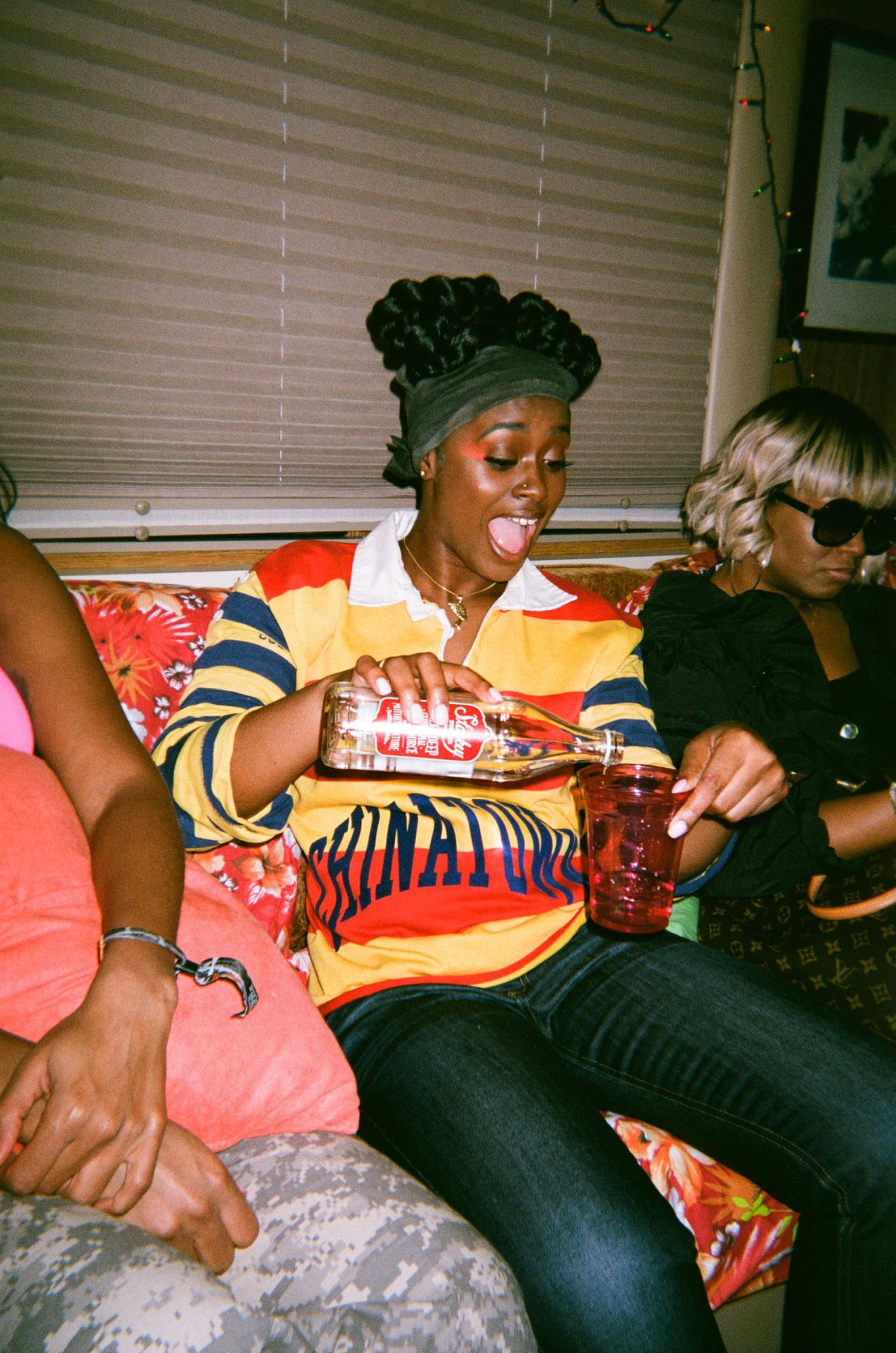
“I’ve always been a very hands-on creative, but coming to New York, everything is digital, like designing websites and apps. I wanted to do something more tactile again and I love photography,” Dia explains. “I saw there was a huge community of young photographers here in New York bubbling up and I wanted to create something that tied both of them together. And something that tied it with the whole scene brewing out here in art, fashion, music, skate.”
Venturing into the business of film photography in the digital age would be seen as risky to most, but it was natural for Dia and Alvarez-Smikle, who also credit the timing of film photography’s renaissance as being crucial to their business. They realized that although they were sending cameras to people who would send them back to get the film developed, people were still only receiving digital files. Physical prints weren’t sent unless requested specifically. Over time, Manual began evolving from a strictly film camera company into a photo and lifestyle brand that seeks to further engagement among the photography community and brands they love, sharing the overall vibe the community brings. “We want to sit in the middle of all that,” Alvarez-Smikle says.

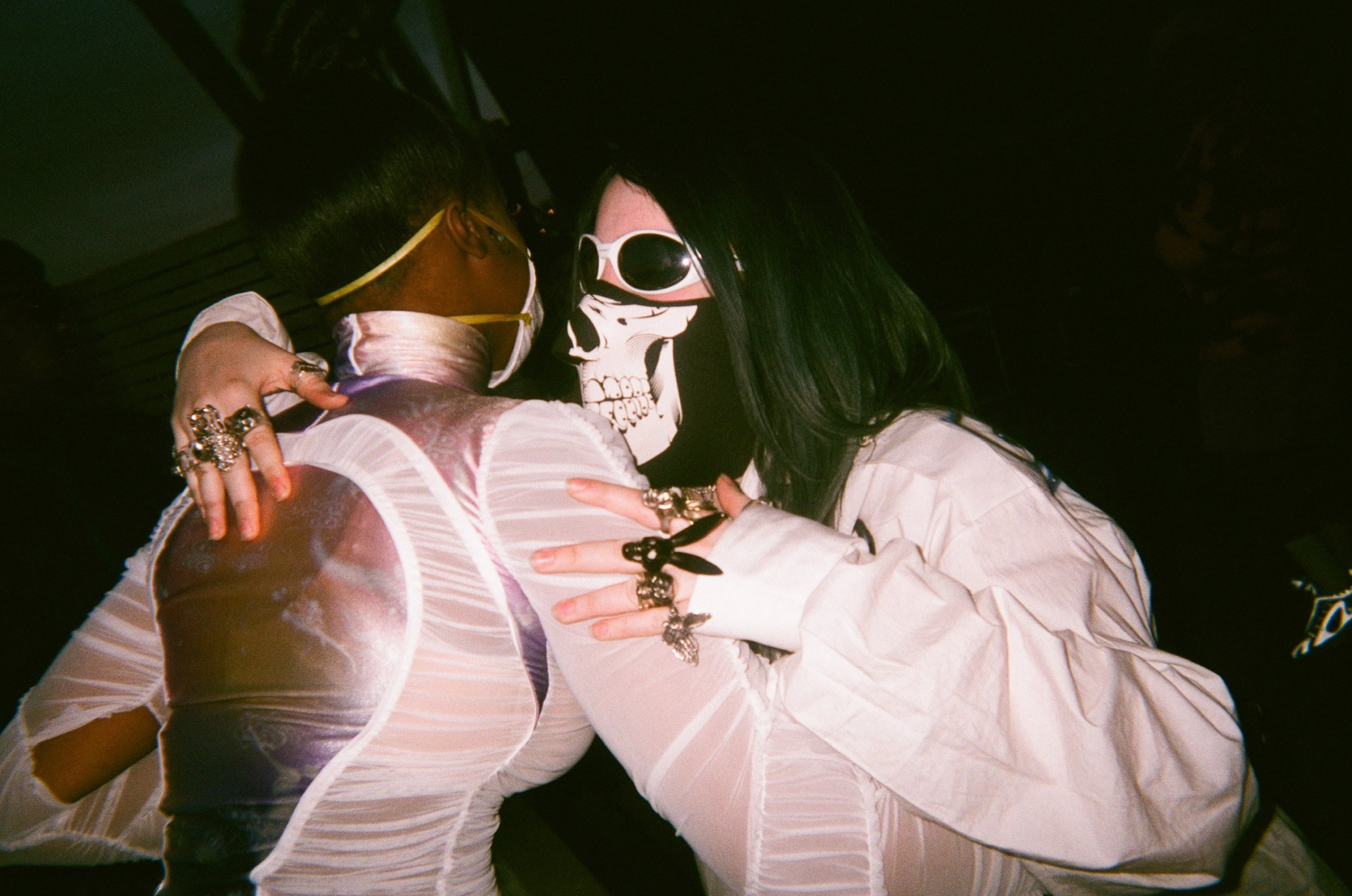
Over the summer, the company had a pop-up photo lab at 55 Delancey Street on the Lower East Side, which offered film development services with every purchase of a disposable camera, refreshments from office coffee, exclusive merchandise, and a selection of books and zines curated by Dashwood Books. They likened the pop-up to a home for young creatives.
“Normally when you go to a development spot, there’s a counter, you drop off your film, and you leave. We thought there could be a space where conversations could develop, where people could meet and we could curate a wall of books and zines, and you could grab one and be inspired, then grab some film, go shoot, come back, and get it developed, to create this kind of cycle or ecosystem that isn’t really there in photography right now,” Dia explains.

This cycle is symbolized by a communal table Manual had at the pop up that now sits in the company’s new Brooklyn studio. It’s a destination where graphic designers, photographers, skateboarders, and young people can visit to commune and exchange ideas. Offline interactions like these are what prompted Dia and Alvarez-Smikle to create a physical embodiment of what Manual was becoming—an inclusive space for everyone to take pictures and share what they create.
A crucial part of Manual’s agenda in wanting to make photography more accessible is affordable pricing. “The whole concept was that we wanted the next generation of kids to start shooting from that shop. So you could come in not knowing much about photography, and grab a camera and a roll, go shoot it, get it developed, and spend less than $25 for that whole cycle,” Dia explains. This attitude towards pricing, as well as their commitment to reusing and recycling cameras and packaging materials, sets Manual apart from other companies in the landscape of photography and in New York at large.
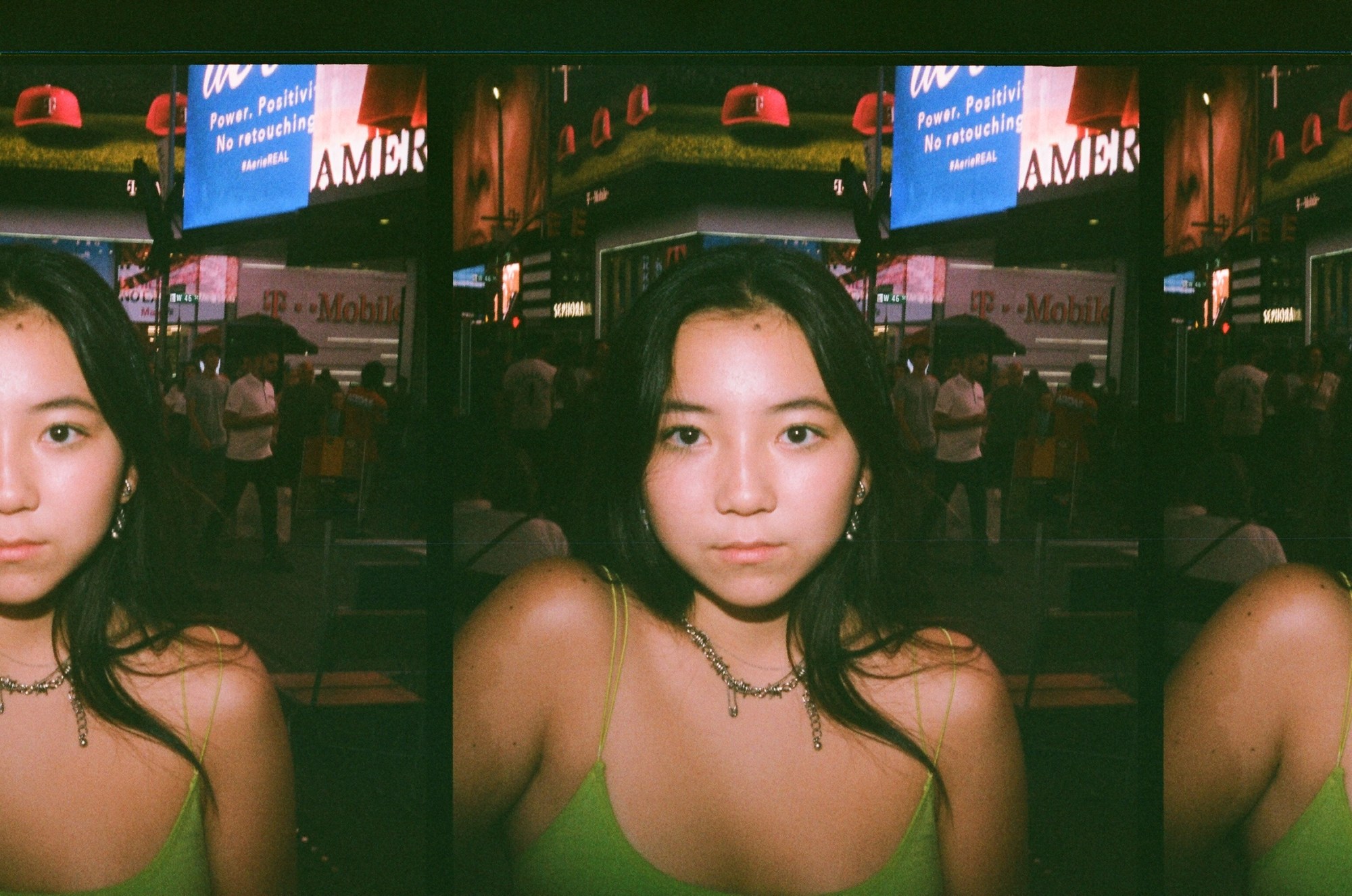
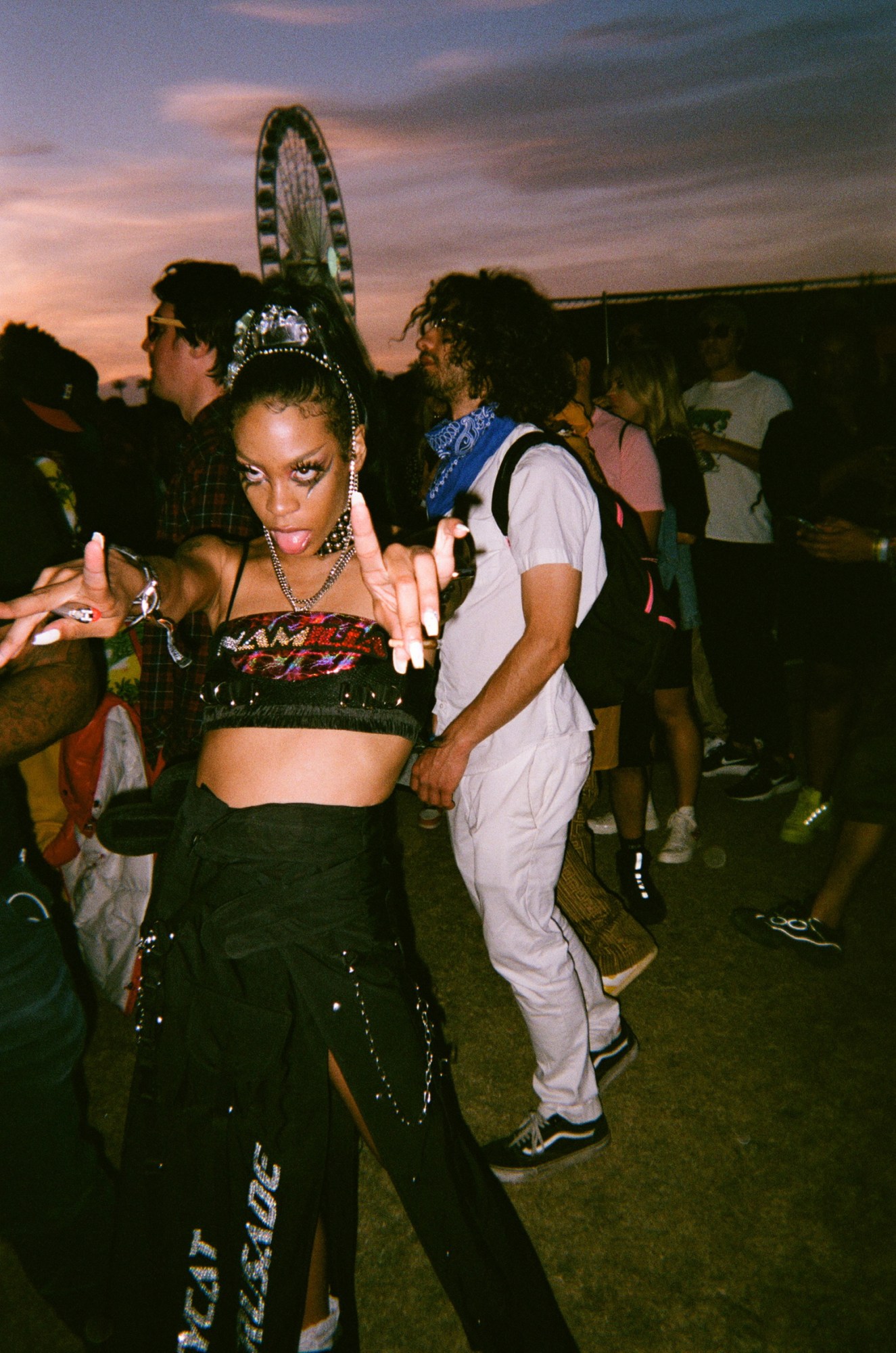
“The thing about Manual is that we don’t want people to have to purchase anything to experience what we’re about. I don’t think there’s another company that exists in the same kind of way we do,” Alvarez-Smikle explains. “In the sense that we’re organizing a community in this space for the common advancement of the overall idea—the overall idea of photography and accessibility and community being organized into a central brand.”
Although Manual is inextricably a part of New York, the company also values sharing its sense of community in other parts of the world. Manual recently traveled to Japan to collaborate with Tokyo Vitamin, a Tokyo-based collective of artists and DJs, by hosting a pop-up party and event at Trunk Hotel. Tokyo was just the beginning, however, for Manual in asserting its international presence and uplifting youth culture everywhere through photography. “There’s a really good scene of young photographers bubbling up in Japan. And just in general internationally, there are all these little pockets of young photographers bubbling up, and we kind of want to hop around to all of them,” Dia says.
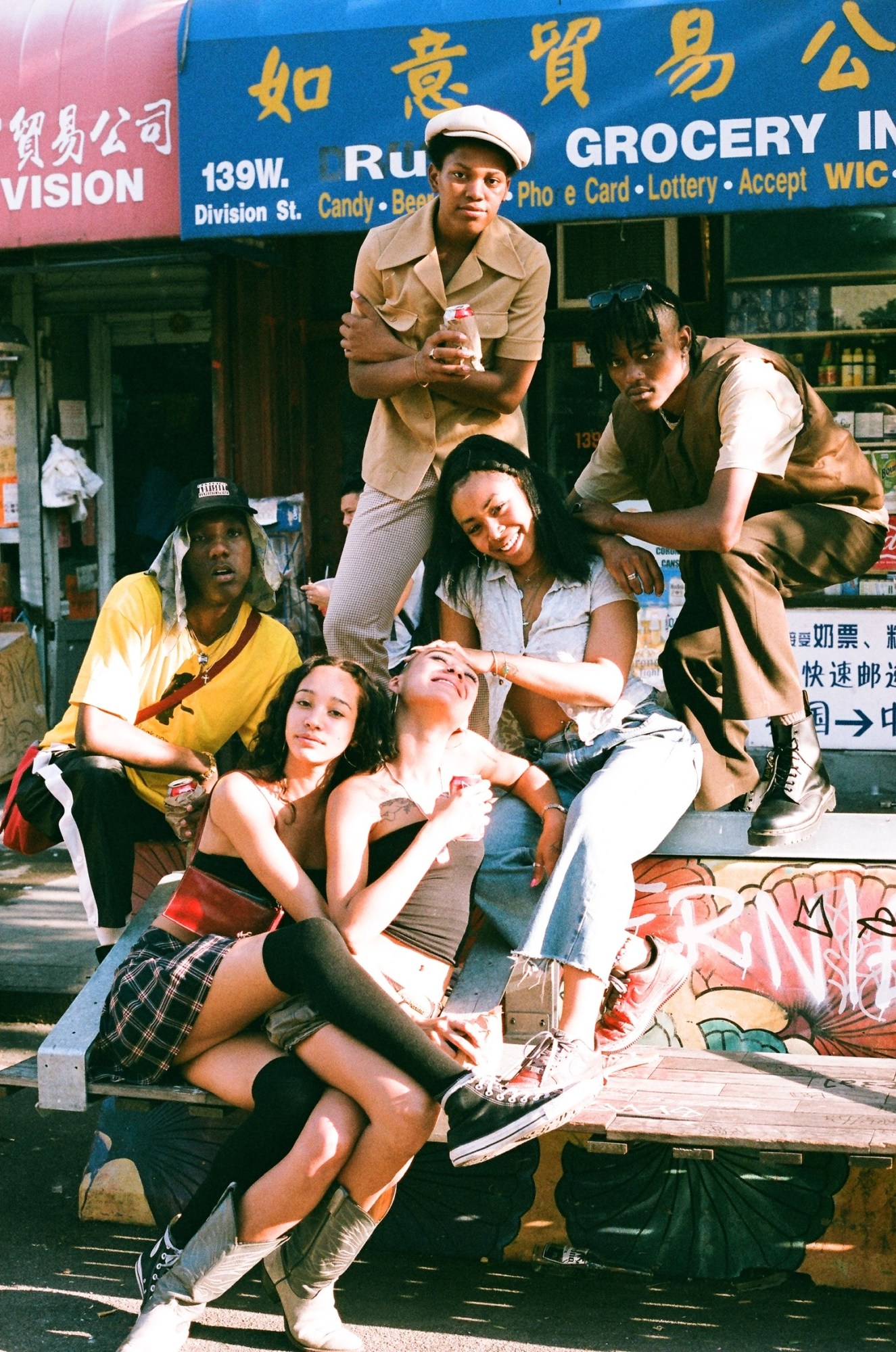
This strong sense of connectivity and support for young artists is integral to how Manual has organically grown as a movement both in New York and by collaborating with photographers from around the world. Photographers Aijani Payne, Jacob Consenstein, and Mark Custer had solo photo shows at the pop-up over the summer, garnering hundreds of attendees. Manual worked with photographers Tyrell Hampton, Amandla Baraka, and Lumia Nocito through its collaboration with The Standard. Having also collaborated with institutions like the Whitney and brands like The North Face, among many others, the significant depth and reach of Manual’s work have informed its evolving vision.
“We want to be involved in these photographers’ journeys from when they’re starting out all the way to when they’ll be in these institutions, these museums. I think we’re getting there,” Dia says. “We talk a lot to museums, galleries, and auction houses about how they can start to value young photographers’ art. Community comes in when we’re bringing in different perspectives together to help advance things and change the industry.”


It’s the individual’s perspective that drives the passion behind Manual. Everyone wants to capture and convey something different, and Manual sees itself as a conduit to allow people that kind of self-expression through photography. “The community is going to carry you through life in a creative way as you move forward. Being able to provide a space for that is so incredibly valuable,” Alvarez-Smikle says.
What’s next for Manual is growth beyond collaborations. “We’re evolving in real time,” Alvarez-Smikle explains. “We’re going to be filling more into that photo and lifestyle category and be driving that narrative, and just really continue increasing the touchpoints of community for a lot of people. It’s really important to go to these places around the world and create that same sense of connectedness and togetherness, and even connect them as a pipeline to New York and everything that’s going on here, and vice versa.”
“Trying to touch the art world more too,” Dia adds. “Bring them back down to earth.”
